/ SNI INSight, Portraits
New honorary member Christian Schönenberger: Always searching for answers
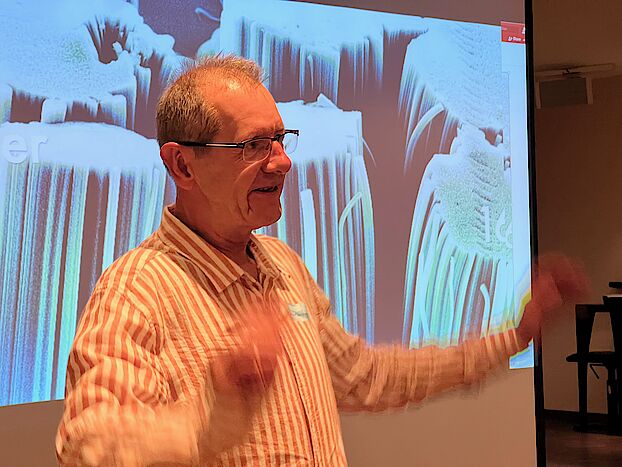
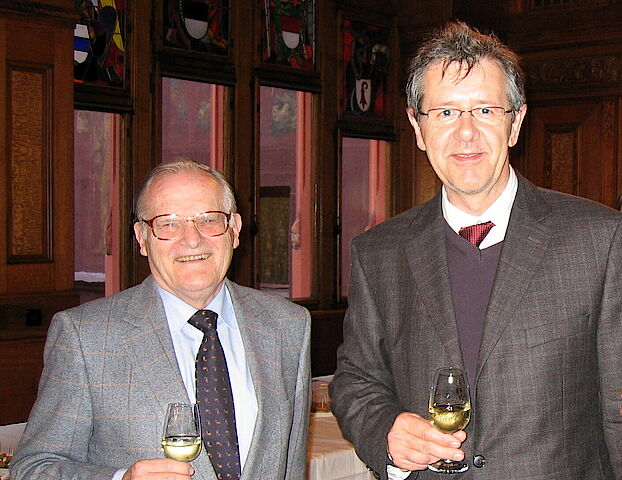
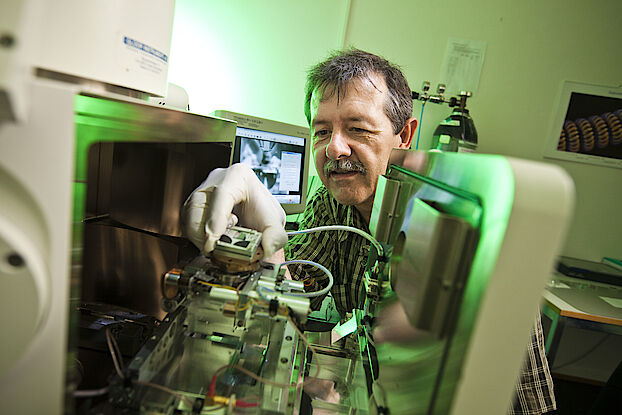
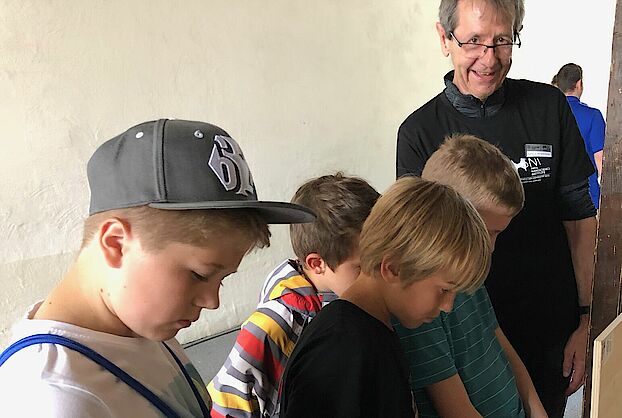
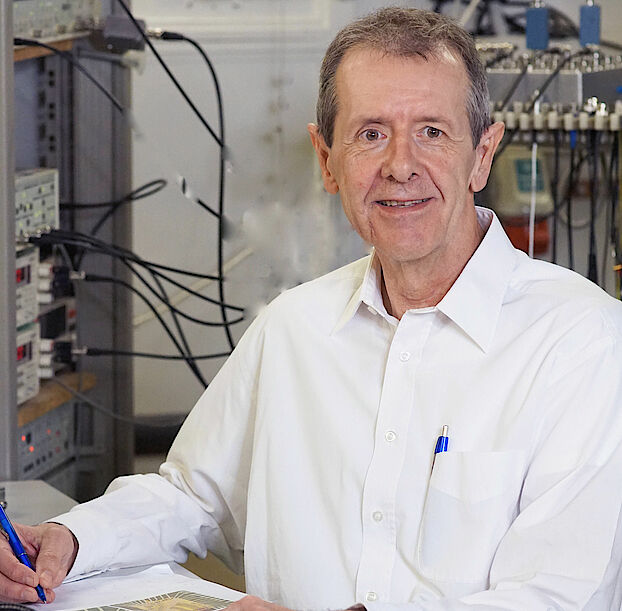
In September 2022, Professor Christian Schönenberger was awarded honorary membership in the SNI for his extraordinary dedication as SNI director. Many of us know about his contributions to the SNI, the aspects of the SNI that were important to him and where his academic interests lie. In this interview, he lets us in on a few details about his career that some of us may be less familiar with.
Professor Christian Schönenberger was SNI director for sixteen years. Together with many colleagues from the fields of physics, chemistry and biology, he made the SNI into what it is today – a recognized interdisciplinary center of excellence for nanosciences and nanotechnology. But back when he started his career, he could never have imagined this or another of his other professional achievements.
Many different stations along the way
When Christian Schönenberger left high school in 1972, he had no intention of pursuing a Matura (high school diploma) or a university degree. Instead, he chose to apprentice as an electrician. Over the course of four years, he learned his trade at a small company and developed automatic film developing machines. Even back then, he was keen to understand how everything fit together and find answers to his many questions. In 1976, he started a three-year training program in electrical engineering at the Technikum in Winterthur, so that he could keep on learning.
After that, he took up a position as a technical assistant at ETH Zurich. There, he worked in molecular spectroscopy, where he helped build a UV laser for molecular excitation, a project that introduced him to quantum physics for the very first time. “I was working with two doctoral researchers, and that got me thinking that I would like to have a deeper understanding of the material, too,” recalls Christian. So, he decided to start all over again and study physics at ETH Zurich. “But that wasn’t quite so easy, because I didn’t have a Matura,” he says. So, Christian was forced to hit the German literature books and pass both an English examination as well as written and oral exams in German before he could get started.
Fascinating studies and starting a career at IBM
Christian truly enjoyed his time at university. But even after receiving his diploma, he still had not completely fulfilled his need to dig deeper into the subject matter, so he struck out in search of a topic fit for a doctorate. His search led him to the IBM research lab.
The lab, supervised by Professor Heinrich Rohrer, was working on some fascinating projects, and on top of that, he would need some industry experience later on when applying for jobs, so this opportunity was relatively secure. That was important for Christian because he had just become a new father.
For his doctoral dissertation, Christian built a magnetic atomic force microscope. He shared his lab – and many experiences and experiments – with Christoph Gerber, with whom he would again enjoy a close working relationship years later in Basel. In 1990, after completing his doctorate, Christian took up a position at Philips Research in Eindhoven (Netherlands), which at that time was one of the foremost industry research labs. His work there focused on low-temperature scanning tunneling microscopy and sensors that could be used to read out magnetic information in storage media.
“I had a great time at Philips,” recalls Christian. “But then the company began restructuring and some very good and ambitious colleagues of mine quit to take up professorships.”
Christian started down a new path as well. He submitted an application to the Swiss National Science Foundation for an assistant professorship and subsequently received the position. Christian had intended to join the team led by Professor Hans-Joachim Güntherodt at the University of Basel, which had become the foremost research group for scanning probe microscopy, but before he could start on as assistant professor, Hans-Joachim Güntherodt advised him to apply for the recently announced professorship for condensed matter. Christian was appointed and started his new job in 1995.
Switching to a new field of research
Hans-Joachim Güntherodt had expected to welcome another member to the scanning probe microscopy community, but when Christian returned to Basel, he was more intent on starting something new instead. His goal would not be to develop new microscopes, but rather to work on electronic components that could be used to study and reduce electrical noise.
His colleague Güntherodt, who, at the time, was Basel’s only other professor for experimental condensed matter, supported his approach. Güntherodt advocated for Christian’s project before the President’s Board and made sure he received a second appointment credit. “In the beginning, there was no infrastructure in place here for my research approach, and I had to build it up piece by piece,” says Christian. “Over time, as we gained new colleagues who needed similar equipment, it got easier, because we could work together to make larger purchases.”
So began Christian Schönenberger’s career at the University of Basel. The Department of Physics and his own Quantum and Nanoelectronics Lab both grew as the years went on. He has since produced over 230 publications, received numerous awards and raised 18 million Swiss francs in third-party funding.
Christian Schönenberger has always been dedicated to the education of excellent young scientists. From the very beginning, he was a proponent of establishing a bachelor’s and master’s program in nanosciences at the University of Basel – a program that would be unique in Switzerland – and he continued to support it over the course of its development. During his career, Christian supervised 72 doctoral students, some of whom are still working on their doctorates. And he always managed to find time in his busy schedule to hold outreach activities at the SNI for children and teens.
Always interested in new topics
When asked to share the highlights of his academic career, he mentioned a Hanbury Brown and Twiss experiment published in Science that was conducted with electrons on a chip. Together with his team, he demonstrated that the electrons behaved like fermions, excluding each other. Another highlight he mentioned was a project in which his team extracted and split entangled electron pairs (Cooper pairs) in a superconductor. This study, which was published in Nature, laid the groundwork for further experiments with entangled electrons from superconductors (for more information, see the other article on experiments involving entanglement in this edition of SNI INSight).
A glance at Christian Schönenberger’s impressive bibliography reveals many more approaches and findings that have attracted attention in the world of science. It is also notable, however, that his research topics keep changing over time. So with the inception of the National Center of Competence in Research (NCCR) Nanoscale Science in 2001, Christian began a new chapter in the field of nanoelectronics.
“When Hans-Joachim Güntherodt approached me with the idea of applying for selection as an NCCR together with the biology and chemistry departments, I knew right away that I wanted to support interdisciplinary research,” explains Christian Schönenberger. “Through Hans-Werner Fink from the IBM Research Center, who worked in my lab at that time, I met the chemist Bernd Giese here in Basel, who was studying the conductivity of DNA using chemical electrodes. Through that connection, Michel Calame and I came up with the idea of incorporating smaller molecules into electrical circuits and studying them.” Michel Calame, who spent many years working in the Schönenberger team, has continued this work for years now as head of a research group at Empa.
In Christian Schönenberger’s lab, the team later began conducting physical investigations of two-dimensional electron gases, metallic nanowires and carbon nanotubes.
“When Konstantin Novoselov – who won the Nobel Prize together with Andre Geim for the creation of graphene – was visiting Basel, I, too, was bitten by the graphene bug and started doing research in the same field,” recalls Christian. It was a short leap from graphene to other two-dimensional structures and then to van der Waals heterostructures, which he continues to study today.
Great dedication to the network
In addition to his academic pursuits, in the final stages of the NCCR, Christian Schönenberger, along with Hans-Joachim Güntherodt and other colleagues, showed a tireless commitment to ensuring the future of both the interdisciplinary network they had built and the academic exchange between institutions. Thanks to the support they received from the canton of Aargau and the University of Basel, their efforts succeeded and led to the founding of the SNI in 2006.
When asked to reflect on the high points of his time at the SNI, Christian answered: “I’m pleased that the concept we developed back then has stood the test of time. It means we were able to realize the three pillars of training, basic and applied research inlcuding knowledge transfer to industry and successfully integrate them in the canton of Aargau. Over time, with the addition of the Nano Imaging Lab, we established our services area, which we’ve now expanded with the founding of the Nano Fabrication Lab. We couldn’t have predicted it early on, but it has really strengthened the SNI.”
Still managing a busy schedule
In some ways, Christian Schönenberger bid farewell to the SNI at the last Annual Event, although as an honorary member, he will of course be welcome to attend all SNI events. However, he will not be saying goodbye to his research any time soon. Christian will continue to lead his group through summer 2024 and is looking forward to getting back into the lab himself as his coworkers finish their projects and the lab gradually begins to clear out.
Although he is now no longer managing administrative tasks for the SNI, his schedule is just as packed as ever. Several doctoral dissertations are waiting to be read, staff members want to discuss their projects, email inquiries need to be fielded – the list goes on and on. But every now and then, he has a free moment to climb onto his mountain bike and really work up a sweat.
One thing is certain: When Christian Schönenberger retires in 2024, he will be on the lookout for an exciting new project that he can pursue with all the same enthusiasm and commitment that we have come to know so well.
More information:
Research group Christian Schönenberger
Selected publications
